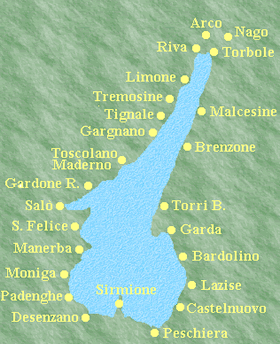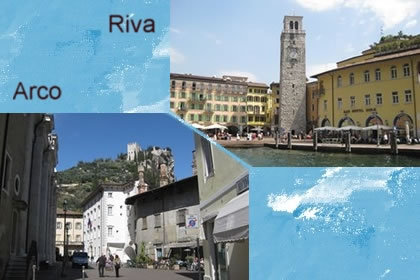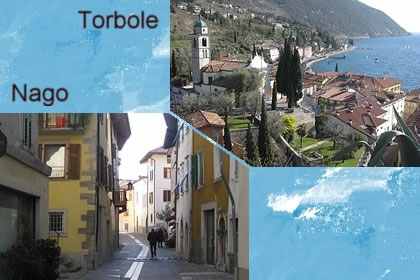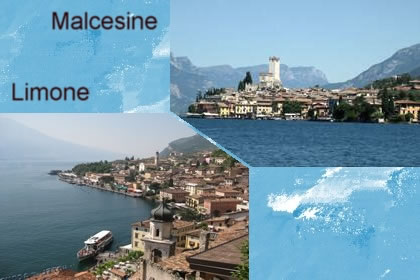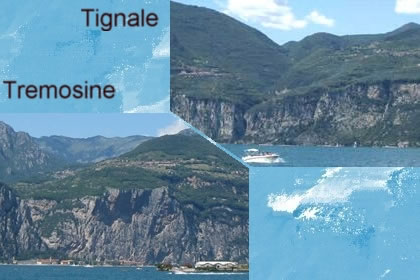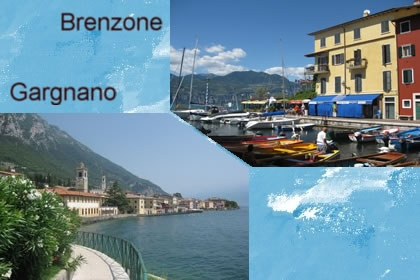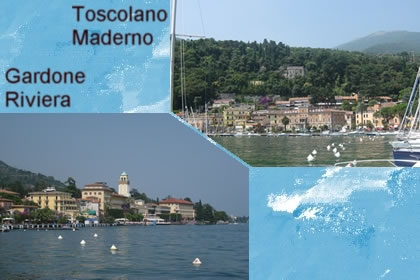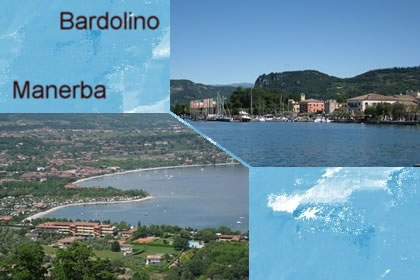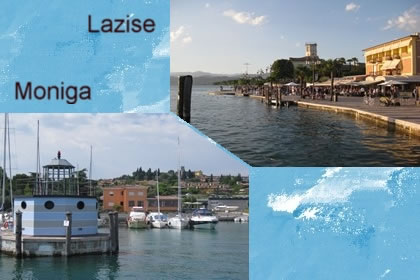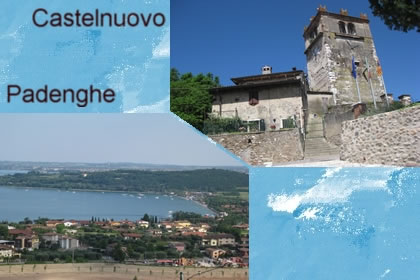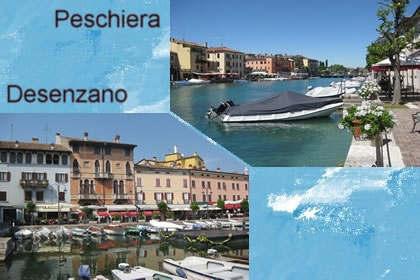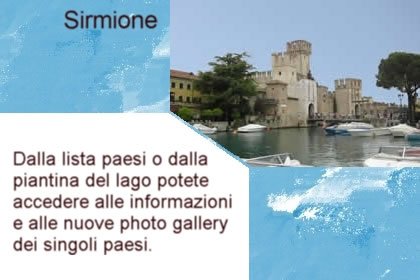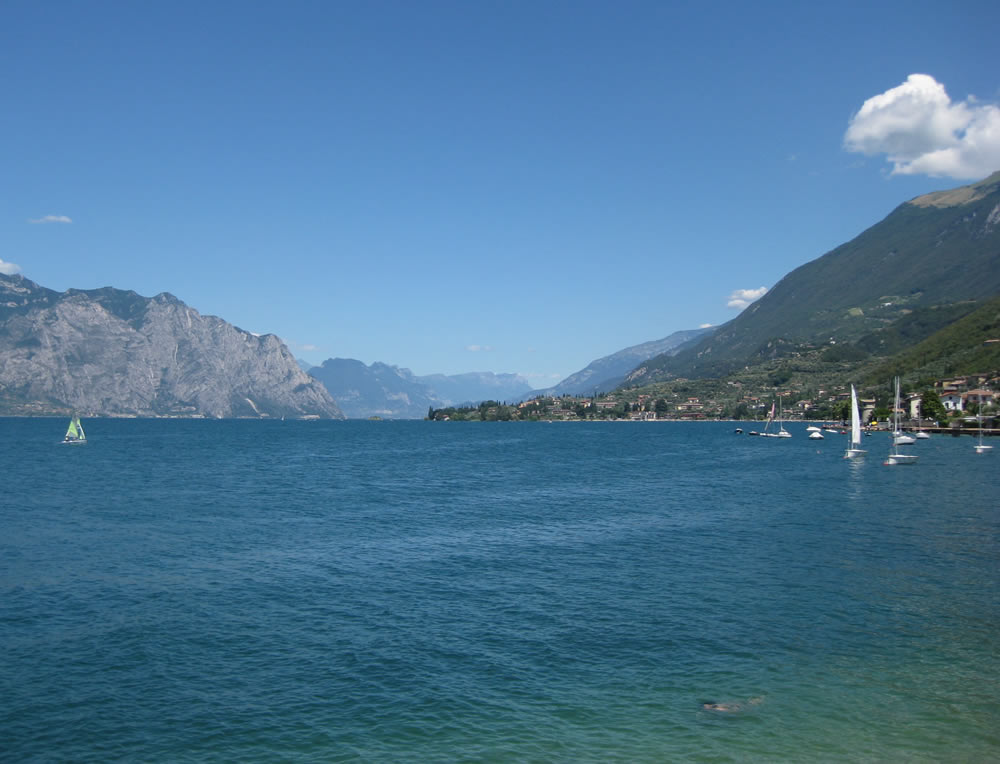Lake of Garda and its Towns
Glacial raised-up Lake of Garda is the biggest lake of Italy, 370sqkm, also called as Bènaco.
Its shape is pretty narrow on the Northern side, it is squashed between Baldo Mountain (east coast) and the mountains of the Garda Bresciano Park (west coast). Going South, mountains get shorter until they become hills (which have moraine origins) and the lake gets extends to funnel up to separate the two shores for 17Km.
On Lake of Garda, because of its moderate climate and the presence of breezes, winters that are not too cold (with lows just below 0 C °) alternate with hot summers that are not torrid; this has allowed the growth of a rich Mediterranean vegetation with palms, olive trees, oleander bushes and lemon, alongside an equally flourishing alpine flora.
Along the 158 km of coastline we can find the 25 towns that are around the beautiful lake, many of them are located in bays, others are on the other end of peninsulas and, where the coast did not offer the possibility of settlement for people, they were seeking some space on the slopes above the hills.
For all those towns around the lake tourism is the greatest resource; the more than 800 hotels, the large number of camping areas, restaurants, shops, amusement parks and water parks that are the largest in Italy, and an increasing number of sports and entertainment testify to the strong commitment of those who live in these areas for providing a valuable service to those who choose the lake for their holidays.
Lake of Garda
Altitude: 65m over the level of the sea
Area: 370sqm
Perimeter: 158 km
Length: 52 km
Maximum
lenght: 17 km
Maximum depth of 346 m
Average depth: 136 m
Influent: Sarca (Torbole sul garda)
Effluent: Mincio (Peschiera)
5 islands:
- Garda Island (San. Felice del Benaco);
- San Biagio island, also called Island of the Rabbits (Manerba del Garda);
- Trimelone Island, Island of Dreams and Island of Olives (Malcesine).
The majority of beaches are rocky.
25 Towns (Select below: each town).
